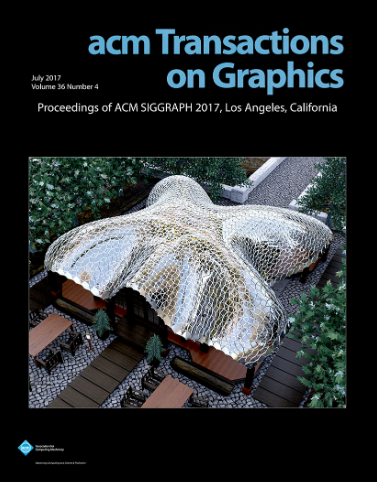HoloChrome: Polychromatic Illumination for Speckle Reduction in Holographic Near-Eye Displays
IF 9.5
1区 计算机科学
Q1 COMPUTER SCIENCE, SOFTWARE ENGINEERING
引用次数: 0
Abstract
Holographic displays hold the promise of providing authentic depth cues, resulting in enhanced immersive visual experiences for near-eye applications. However, current holographic displays are hindered by speckle noise, which limits accurate reproduction of color and texture in displayed images. We present HoloChrome, a polychromatic holographic display framework designed to mitigate these limitations. HoloChrome utilizes an ultrafast, wavelength-adjustable laser and a dual-Spatial Light Modulator (SLM) architecture, enabling the multiplexing of a large set of discrete wavelengths across the visible spectrum. By leveraging spatial separation in our dual-SLM setup, we independently manipulate speckle patterns across multiple wavelengths. This novel approach effectively reduces speckle noise through incoherent averaging achieved by wavelength multiplexing, specifically by using a single SLM pattern to modulate multiple wavelengths simultaneously on one or more SLM devices. Our method is complementary to existing speckle reduction techniques, offering a new pathway to address this challenge. Furthermore, the use of polychromatic illumination broadens the achievable color gamut compared to traditional three-color primary holographic displays. Our simulations and tabletop experiments validate that HoloChrome significantly reduces speckle noise and expands the color gamut. These advancements enhance the performance of holographic near-eye displays, moving us closer to practical, immersive next-generation visual experiences.HoloChrome:用于全息近眼显示斑点减少的多色照明
全息显示器有望提供真实的深度线索,从而增强近眼应用的沉浸式视觉体验。然而,目前的全息显示受到斑点噪声的阻碍,这限制了显示图像中颜色和纹理的准确再现。我们提出HoloChrome,一个多色全息显示框架,旨在减轻这些限制。HoloChrome利用超快、波长可调激光器和双空间光调制器(SLM)架构,实现了可见光谱中大量离散波长的多路复用。通过利用双slm设置中的空间分离,我们可以独立地操纵多个波长的散斑图案。这种新颖的方法通过波长复用实现的非相干平均有效地降低了散斑噪声,特别是通过在一个或多个SLM器件上使用单个SLM模式同时调制多个波长。我们的方法是对现有斑点减少技术的补充,为解决这一挑战提供了新的途径。此外,与传统的三色原色全息显示器相比,多色照明的使用拓宽了可实现的色域。我们的模拟和桌面实验验证了HoloChrome显着降低了斑点噪声并扩展了色域。这些进步增强了全息近眼显示器的性能,使我们更接近实用的、身临其境的下一代视觉体验。
本文章由计算机程序翻译,如有差异,请以英文原文为准。
求助全文
约1分钟内获得全文
求助全文
来源期刊

ACM Transactions on Graphics
工程技术-计算机:软件工程
CiteScore
14.30
自引率
25.80%
发文量
193
审稿时长
12 months
期刊介绍:
ACM Transactions on Graphics (TOG) is a peer-reviewed scientific journal that aims to disseminate the latest findings of note in the field of computer graphics. It has been published since 1982 by the Association for Computing Machinery. Starting in 2003, all papers accepted for presentation at the annual SIGGRAPH conference are printed in a special summer issue of the journal.
 求助内容:
求助内容: 应助结果提醒方式:
应助结果提醒方式:


